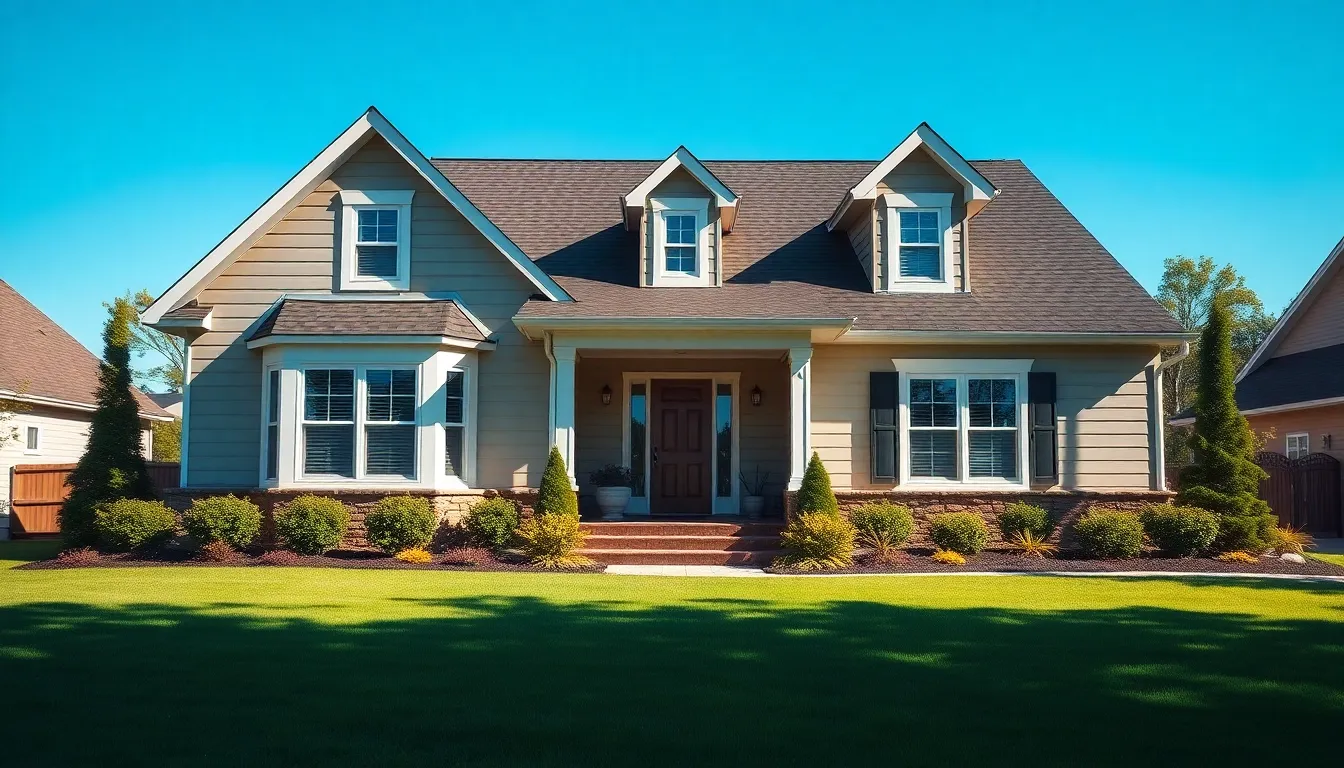Navigating the world of home insurance can feel like trying to assemble IKEA furniture without the instructions—confusing and a bit overwhelming. But understanding home insurance requirements is crucial for protecting your castle from unexpected disasters, whether it’s a tree crashing through the roof or that time the neighbor’s pet llama decided to make a cameo in your backyard.
Home insurance isn’t just a fancy piece of paper; it’s your financial safety net. Knowing what’s required can save homeowners from headaches down the road. From coverage types to essential documents, getting the lowdown on these requirements ensures peace of mind. So grab a cup of coffee, kick back, and let’s dive into the essentials of home insurance that every homeowner should know.
Table of Contents
ToggleOverview of Home Insurance Requirements
Home insurance requirements vary by state and insurer. Each homeowner needs to understand their unique obligations based on location and property type. Many lenders require homeowners to maintain a policy as a condition for obtaining a mortgage. Financial institutions often specify minimum coverage levels, especially for the dwelling itself.
Essential documents include proof of ownership and a detailed list of personal property. Documentation of prior insurance and any claims history may also be necessary. Many insurers require homeowners to provide access to additional inspections or home assessments.
Coverage types must align with specific needs. Dwelling coverage protects the home’s structure from risks like fire or theft. Personal property coverage applies to belongings such as furniture and electronics. Liability coverage offers protection against lawsuits resulting from injuries on the property.
Homeowners should review exclusions and limitations closely. Understanding these details prevents surprises during the claims process. Some insurers may offer optional coverage, such as for natural disasters or home-based businesses.
Regularly updating coverage amounts can address changes in property value or renovations. Homeowners usually benefit from annual reviews of their policies, ensuring adequate protection. Insurers may also offer discounts for security systems or bundling policies.
Types of Home Insurance Policies

Homeowners can choose from various insurance policies to best meet their needs. Understanding these options provides crucial protection.
Standard Homeowners Insurance
Standard homeowners insurance offers a comprehensive package covering dwelling, personal property, and liability. This policy protects against events like fire, theft, or vandalism. Coverage typically includes loss of use, which assists in temporary living expenses during repairs. Homeowners should examine their policy limits and deductibles closely, ensuring they align with the home’s value. Specific exclusions may exist, so reviewing those is essential to avoid potential surprises.
Specialized Policies
Specialized policies cater to unique circumstances or properties. These include policies for older homes, high-value homes, or those in disaster-prone areas. Actual Cash Value or Replacement Cost policies can adjust based on home value fluctuations. Flood insurance, often excluded from standard policies, protects against water-related damages in designated flood zones. Earthquake insurance serves a similar purpose in earthquake-prone regions. Additional endorsements or riders can supplement coverage, addressing specific needs such as personal injury or equipment breakdown.
Factors Influencing Home Insurance Requirements
Understanding factors that influence home insurance requirements is crucial for homeowners. Variations often exist based on location, property type, and financial aspects of the home.
Location and Property Type
Location significantly affects home insurance requirements. Areas prone to natural disasters like floods or earthquakes may mandate additional coverage. Urban settings tend to have higher crime rates, leading to increased premiums. Property type also influences requirements; for example, older homes might necessitate special policies due to outdated wiring or plumbing. Homeowners should ensure coverage aligns with specific risks tied to their geographical area and property characteristics, ensuring adequate protection against potential threats.
Home Value and Replacement Cost
Home value and replacement cost play critical roles in determining coverage amounts. Accurate assessments of a home’s value ensure homeowners don’t underinsure or over-insure their property. Replacement cost refers to expenses needed to rebuild the home following a loss. It is essential to consider local construction costs and material availability in this calculation. Insurers may require documentation of recent improvements or renovations to adjust coverage accordingly. Regular evaluations keep coverage relevant, providing necessary financial security in case of unforeseen events.
Legal Obligations for Home Insurance
Understanding legal obligations surrounding home insurance is crucial for homeowners aiming to mitigate risks. Requirements typically vary but mostly include guidelines set by mortgage lenders and state regulations.
Mortgage Lender Requirements
Mortgage lenders often mandate homeowners insurance as a condition for loan approval. Protection against potential hazards, such as fire or theft, is essential to safeguard the lender’s investment. Lenders often specify coverage amounts that align with the property’s value, ensuring adequate protection. In many cases, they may require specific types of coverage, such as liability for accidents on the property. Checking with the lender before purchasing a policy helps align with their requirements and ensures loan compliance. Sufficient coverage prevents complications during the mortgage process.
State Regulations
State regulations play a significant role in determining home insurance requirements. Each state establishes its own legal standards regarding mandatory coverage amounts and types. Some states may enforce specific policies for high-risk areas, particularly those prone to natural disasters like floods or earthquakes. Homeowners must familiarize themselves with local laws to ensure compliance and secure necessary coverage. Additionally, variations exist in licensing standards for insurance providers, affecting policy options available to homeowners. Staying informed about state-specific legal obligations helps homeowners avoid potential fines or coverage gaps.
Tips for Meeting Home Insurance Requirements
Understanding the specifics of home insurance requirements takes careful attention. He or she can ensure adequate protection and compliance with these handy tips.
Choosing the Right Coverage
Selecting appropriate coverage is vital and hinges on individual circumstances. A homeowner identifies their unique needs and assesses risk factors like location and property type. Review standard homeowners insurance for comprehensive protection against common threats, such as theft and fire. He or she should not overlook specialized coverage options tailored for unique situations, including flood or earthquake insurance. Additionally, evaluating personal property coverage helps protect valuable belongings. Coverage limits may need adjustment based on increasing property values or changing life situations. Always consult an insurance agent to clarify any doubts regarding available options.
Regular Policy Reviews
Performing annual policy reviews strengthens the relevance of home insurance coverage. A homeowner should evaluate their policy to ensure it meets current needs and accurately reflects the home’s value. Reviewing the specifics during life changes, such as renovation, relocation, or new family members, may reduce coverage gaps. Adjusting coverage limits helps avoid underinsurance or overinsurance pitfalls. Identifying discounts for security system installations or bundling policies with other insurance types can also reduce premium costs. Engaging with an insurance agent provides valuable insights that aid in making informed adjustments to the policy when necessary.
Navigating home insurance requirements can feel daunting but understanding them is essential for every homeowner. By familiarizing themselves with coverage types and necessary documentation, they can ensure adequate protection against unforeseen events. Regular policy reviews and updates are crucial for maintaining relevant coverage that reflects the home’s current value.
Engaging with insurance professionals can provide valuable insights and help identify potential discounts. Homeowners should stay informed about local regulations and lender requirements to avoid coverage gaps. Ultimately, a proactive approach to home insurance not only safeguards their investment but also offers peace of mind in an unpredictable world.







